How To Grow Autoflowering Cannabis
- What Is Autoflowering Cannabis?
- Pros And Cons Of Autoflowering Seeds
- Autoflowers Come With Options: Growing Indoors And Outdoors
- Down To Brass Tacks: Growing Autoflowering Cannabis
- Choosing The Right Auto Seeds For You
- Choosing The Right Soil Mix
- Avoid Overfeeding
- Start With A Big Pot
- Keep The Environment Under Control For Healthy Plants
- Decide On Your Light Schedule
- Gentle Training Techniques
- Harvest Gradually For Maximum Yield
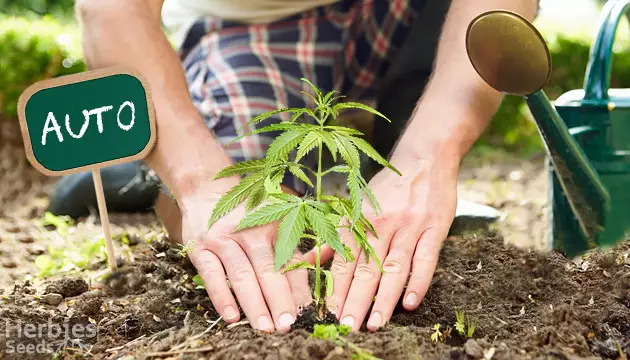
If you’re interested in growing cannabis, chances are you’ve heard of autoflowering strains. But maybe you’re feeling a bit overwhelmed – autoflowers certainly raise a lot of questions! How do you grow autoflowering seeds? Where do they even come from? Well, did you know that the first autoflowering cannabis, cannabis Ruderalis, was scientifically discovered in the 1920s by Russian botanist Janischewski? Over the decades, this has turned into a successful market for tasty, quick-growing pot that gets you high. Following this exciting trend, we’re introducing the following guide to growing autoflowering cannabis that will leave no questions unanswered!
What Is Autoflowering Cannabis?
Modern autoflowering cannabis is the outcome of a cross between cannabis Ruderalis and cannabis Indica or Sativa. Cannabis Ruderalis was discovered as a type of low THC cannabis that grows in the wild with weed-like traits, in that it reaches maturity and enters the flowering stage independent of the amount of light received. Autoflowers begin to flower after 2-4 weeks in the vegetative stage, appealing to growers for the quick turnaround on a harvest. If you want to know more about cannabis Ruderalis, Herbies has a full guide ready for you. Also, if you’re curious about the differences between autoflowering and other strains, check out our Autoflowering vs Photoperiod vs Feminized vs Regular article.
Pros And Cons Of Autoflowering Seeds

Autoflowering cannabis strains sound like a dream – “I don’t have to worry about the light schedule?” – but like all good things, autos also come with their own setbacks.
Pros
There are many advantages to growing autoflowering strains. Not only are they very suitable for beginner cannabis growers, they appeal to growers of all levels for their small, stealthy build and quick results. Growers don’t have to judge for themselves when to switch from the vegetative stage to flowering, since these strains begin to flower on their own. Nowadays, the newest generation of autoflowers boast larger harvests and increased THC content than even some of their rival photoperiod strains.
Cons
Of course, this is a matter of preference, but some may consider it a disadvantage that autos are small and don’t tend to yield as large a harvest. Despite their size, they can still need a lot of light; if you want to maximize your harvest, a 20/4 light schedule is a good idea, but this comes with the drawback of a higher electricity bill. Another drawback is the short vegetative stage, which can make it difficult to train your plants.
Autoflowers Come With Options: Growing Indoors And Outdoors
Autoflowers are suitable for both indoor and outdoor growing, depending on what you as a grower want to accomplish. You get to decide which suits you best depending on your setup and what you can afford.
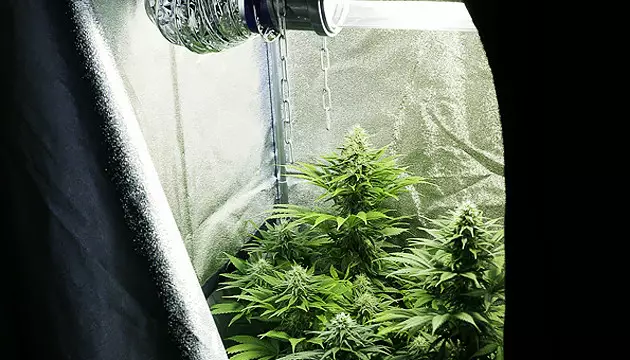
Growing Indoors: You Decide How Much Light!
Autoflowers make for great indoor plants because you can harvest many times throughout the year. With an average of 8-12 weeks from seed to harvest, you could easily see 4-6 harvests in a year. That’s a lot of bud! Plus, during flowering, auto plants can handle much more light compared to photoperiod strains that can only do 12 hours of light or less, and thus autos grow bigger buds in a shorter period of time. Just be aware of how much electricity you’re using on your plants – getting an unexpectedly huge bill in the mail is no fun!

Easy Outdoor Growing
Outdoor growers can also expect great results from autoflowering strains, since the vegetative stage is genetically determined and growers won’t have to wait for the days to get shorter to see flowering. With lots of free light and CO2 outside, your plants will be super happy, but also more at risk of mold, insects and animals. At the very least, you won’t have to worry too much about humans, since autos are far less noticeable due to their small size.
Down To Brass Tacks: Growing Autoflowering Cannabis
So, you’ve weighed the advantages and disadvantages of autoflowering strains and are interested in getting started. Let us guide you through the steps of choosing cannabis seeds, soil and nutrition, light scheduling and harvesting.
Choosing The Right Auto Seeds For You
In this new generation of autoflowers, there are plenty of awesome strains from trustworthy seed banks to choose from! We’ve chosen our three favorite autoflowering strains for our readers, all amazing Sativa-dominant hybrids with excellent flavors, effects and growth potential.
Get A Huge Harvest With Trippy Gorilla Auto
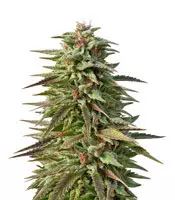

- Autoflowering
- 400 - 600 g/m² indoors
- Euphoric waves through the body
Trippy Gorilla Auto is a Sativa-dominant hybrid from Big Head Seeds. It boasts piney, citrusy flavors and a high THC content of 25-28% that will leave you feeling inspired and energized. This is a wonderful autoflowering strain because of its vigorous growth and quick, heavy harvest. If you play your cards right, you could yield up to 600g/m2 (1.97 oz/ft2) in just 8 weeks!
Pineapple Express Auto – A Sweet Treat

- Autoflowering
- Intergalactic flights and complete tranquillity
- 400 - 550 g/m² indoors
50 - 200 g/plant outdoors
Cannabis enthusiasts are blessed by FastBuds’ Pineapple Express Auto, an autoflowering variety of the classic strain. This tropical, fruity treat is ready for harvest after about 60 days, producing roughly 300g (10.5 oz) of dense, resinous cannabis per plant. This strain is a little taller than other autos, clocking in at around 140cm (4’5”). After a couple of months, you’ll love relaxing with the fruits of your labor.
Gelato Auto Is A Heavy Hitter!
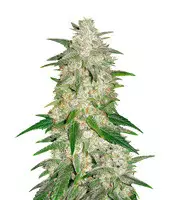
- Autoflowering
- High escalation
- 400 - 550 g/m² indoors
50 - 200 g/plant outdoors
Gelato Auto, also from FastBuds, has been deemed the most potent auto strain they have on offer! Don’t be fooled by its stature; the strain may take after its Indica ancestry with its short, stocky stature, but the 26% THC content might make you forget this is an auto! Gelato Auto lives up to its namesake with a creamy, dessert-like flavor profile complemented by notes of citrus. The strain provides an uplifting, giggly high with the added bonus of a deep body relaxation.
Choosing The Right Soil Mix
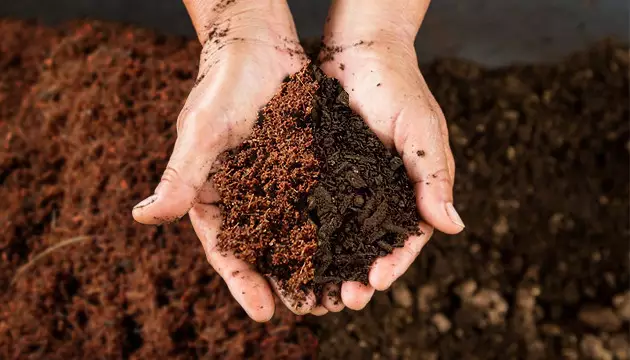
Once you’ve decided on the strains you want to grow, it’s time to think about the materials you’ll need to get started. First up is soil. Autoflowering strains prefer light, airy soil with less nutrients than photoperiod strains need. Choose a lightly fertilized soil like earth mix for Autoflowers, or coconut coir that you can manually enhance with nutrients to avoid overloading your plants with nitrogen. Chances are, you won’t have to give your autoflowering plant too much extra nutrition! You can always add some extra nutrients later if the leaves start to turn yellow.
Avoid Overfeeding
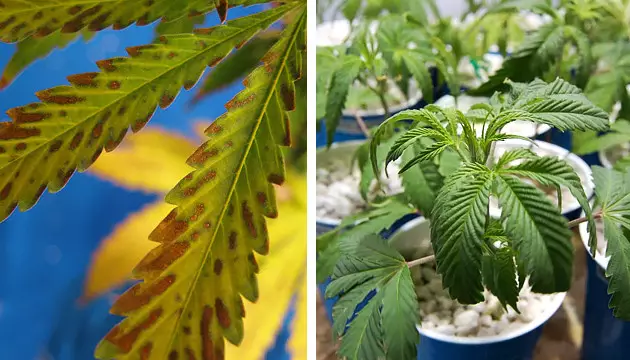
The danger of overfeeding autoflowering strains is very real, as they don’t need that much nutrition. You may not know the damage that’s been done until it’s too late and your plants start showing brown leaves or spots. Since they spend such a short time in the vegetative stage, autoflowers need less nutrients than photoperiod plants and should only be fed very lightly. As mentioned above, you may want to start lightly fertilizing your Autoflowers 2 weeks after germination and increase the amount of fertilizers only if plants show signs of nutrient deficiency. Be careful of overwatering as well; it’s recommended to water autoflowering strains only when the soil dries out as opposed to on a fixed schedule.
Start With A Big Pot
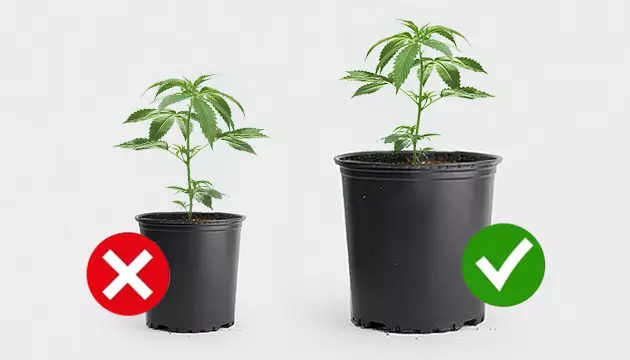
Make sure you don’t start your plants in a pot that’s too small! Autoflowers don’t particularly like to be moved around, so we recommend skipping the hassle of repotting (and the threat of transplant shock), instead simply placing the germinated seeds into the final pot. You don’t want to run out of space for the roots! Air pots – plastic containers with holes on the sides – are a great choice, and are also suitable for SOG training since they’re taller and thinner than normal pots.
Keep The Environment Under Control For Healthy Plants
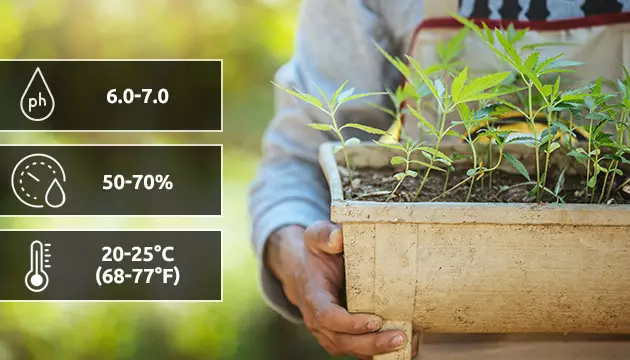
The best environment for autoflowers has good airflow, the right pH, and ideal temperature and humidity. Autoflowering strains thrive at a temperature of 20-25°C (68-77°F) and a humidity of 50-70%. To avoid burning your plants, make sure the temperature doesn’t exceed 28°C (82°F). You can help monitor this by maintaining good airflow, which is important to replenish CO2 and ensure the humidity doesn’t get too high to decrease the risk of mold growth. As for feeding, the optimal pH range for your water is 6.0-7.0, unless you’re growing in coco, in which case the pH range is 5.5-6.5. If the pH level is off, the root system will have a hard time up-taking nutrients and your plants could get sick, which is bad news for autoflowers that don’t have a lot of time to recover!
Decide On Your Light Schedule
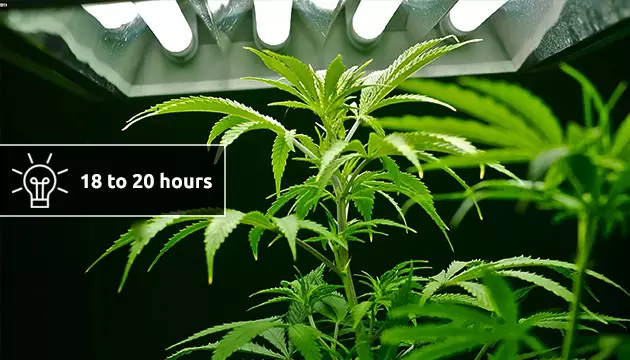
A nice aspect of growing autoflower strains is the liberties you can take with the light schedule. Because autoflowers will begin to flower on their own, you can keep giving them a bunch of light to maximize the yield of your harvest. Autoflowers don’t need very much light to survive, and you’ll still have something to harvest even if they only get 5 hours of light per day. However, for a satisfying yield, indoor growers should give their autoflower plants around 18 to 20 hours of light per day.
Gentle Training Techniques
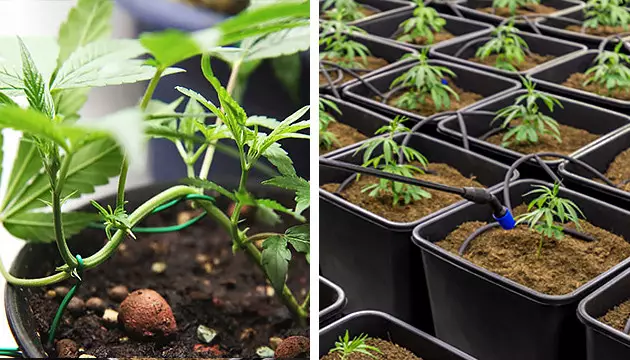
You want to start training your plant at the beginning of the vegetative stage. Time is limited; you only have 2-4 weeks before your plant starts flowering. The training methods we recommend are low-stress training (LST) and the Sea of Green method. By using LST and bending the plant sideways to expose lower branches to more light, you can boost the amount you harvest at the end. Generally, next-generation autoflowering strains respond positively to LST. SOG is a method for indoor growing in order to grow a bunch of smaller plants within a minimal amount of space, resulting in a larger yield. Topping is not recommended, because the plant has such a short life and may not have time to heal before flowering. Autoflowering strains don’t have enough time to recover from high-stress training methods, so these should be avoided altogether.
Harvest Gradually For Maximum Yield

With autoflowering strains, it makes sense to harvest your bud gradually. Autos stay small and grow so quickly, it’s difficult to do a lot of training in the short vegetative stage. Because of their autoflower lifecycle, autoflowering plants don’t have time to develop a canopy, and it makes sense not to trim the lowest branches. Come harvest time, you should therefore first harvest the main colas, giving the buds lower on the plant some time to get denser.
The Promises Of Autoflowers
Nowadays, autoflowering strains are getting more and more sophisticated. We’re in the age of the Super Auto: auto plants are growing larger, stronger and faster than ever before, containing higher THC levels and yielding bigger harvests to better compete with their photoperiod cousins. Growers rejoice, because you can still get a harvest comparable to classic cannabis strains without the time commitment. Happy growing!
Herbies Head Shop expressly refuses to support the use, production, or supply of illegal substances. For more details read our Legal Disclaimer.




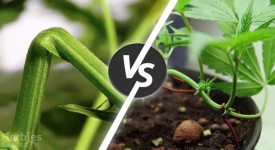

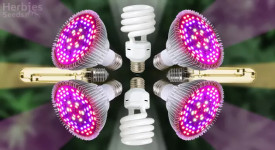


Thank you for leaving a comment for us!
Your feedback will be posted shortly after our moderator checks it.
Please note that we don’t publish reviews that: